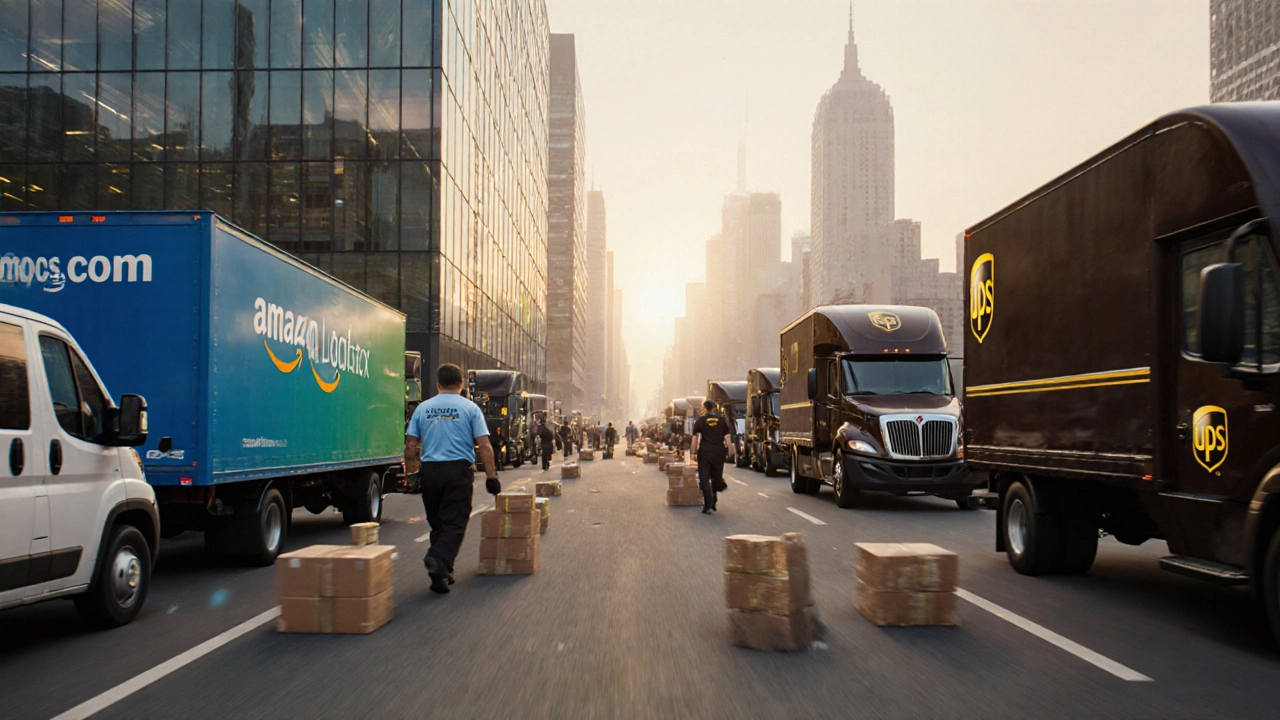Amazon Logistics vs UPS: Who Has the Bigger Network?
Compare Amazon Logistics and UPS across revenue, package volume, fleet, air cargo, and global reach to see which logistics giant is larger.
When working with logistics network comparison, the process of evaluating how different transportation and warehousing options stack up against each other. Also known as shipping network analysis, it helps businesses choose the most cost‑effective, reliable routes and partners for moving goods.
One of the first entities you’ll encounter is courier services, companies that move parcels from point A to B, often offering door‑to‑door delivery and real‑time tracking. They vary widely in speed, price, and coverage, so a solid comparison looks at delivery zones, fuel surcharges, and volume discounts. Another critical piece is UPS, a global carrier known for its extensive ground and air network, premium insurance options, and integrated shipping software. UPS frequently shows up in network studies because its rates affect both small‑batch e‑commerce shipments and large‑scale freight moves.
On the other side of the Atlantic, USPS, the United States Postal Service, offers a different value mix with flat‑rate boxes, international mail agreements, and often lower last‑mile costs. Comparing UPS and USPS helps you decide when to prioritize speed versus price, especially for heavy or oversized packages. When you factor in warehouse management systems, software platforms that coordinate inventory, picking, and shipping tasks across multiple locations, the network picture becomes clearer. A good WMS provides real‑time data on stock levels, enabling you to route orders through the most efficient carrier at any moment.
Beyond the big names, the comparison also touches on specialized players like freight forwarders, which handle customs clearance and intermodal transport. Their role becomes crucial when your network stretches across borders. Meanwhile, e‑logistics tools—digital platforms that automate order entry, label printing, and carrier selection—speed up decision‑making and reduce manual errors. Together, these entities create a web of options that can be measured by cost per mile, delivery reliability, and environmental impact.
When you dive into the numbers, you’ll see common attributes used for evaluation: transit time, service level agreements (SLAs), fuel surcharge formulas, and insurance coverage limits. For example, UPS’s fuel surcharge follows a quarterly index, while USPS applies a flat percent based on package weight. Understanding those attributes lets you build a scorecard that ranks each option against your business priorities—whether that’s minimizing delivery time for perishable goods or cutting costs for bulk shipments.
Many companies also factor in the flexibility of each carrier’s API. An open API lets your order system push shipments automatically, retrieve tracking updates, and even negotiate rates in real time. USPS offers a free web‑tools suite, while UPS provides a paid advanced API with more granularity. If your organization uses a warehouse management system that supports these integrations, you’ll gain a competitive edge by reducing manual entry and speeding up order fulfillment.
Geography plays a huge part too. In coastal cities like Chennai, local courier firms may dominate the “last‑mile” segment, offering door‑step service that large carriers can’t match. However, for cross‑country or international legs, UPS and USPS often present the most reliable infrastructure. A solid logistics network comparison layers these regional strengths with global reach, ensuring you pick the right partner for each leg of the journey.
Below you’ll find a curated set of articles that break down each of these pieces in detail— from insurance nuances for gig drivers to step‑by‑step guides on choosing a courier, and deep dives into warehouse software choices. Use them to build a customized, data‑driven shipping strategy that fits your unique needs.

Compare Amazon Logistics and UPS across revenue, package volume, fleet, air cargo, and global reach to see which logistics giant is larger.